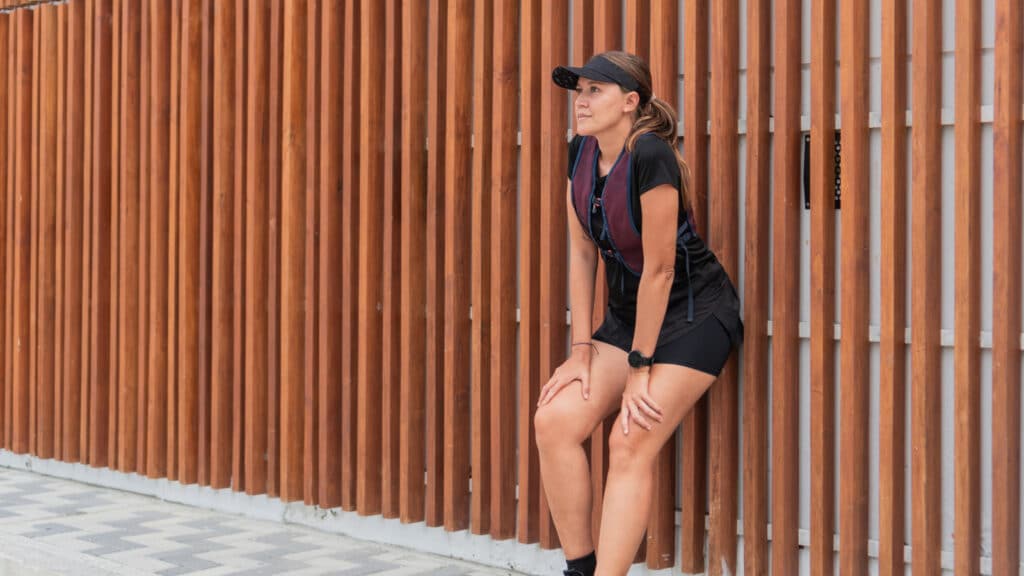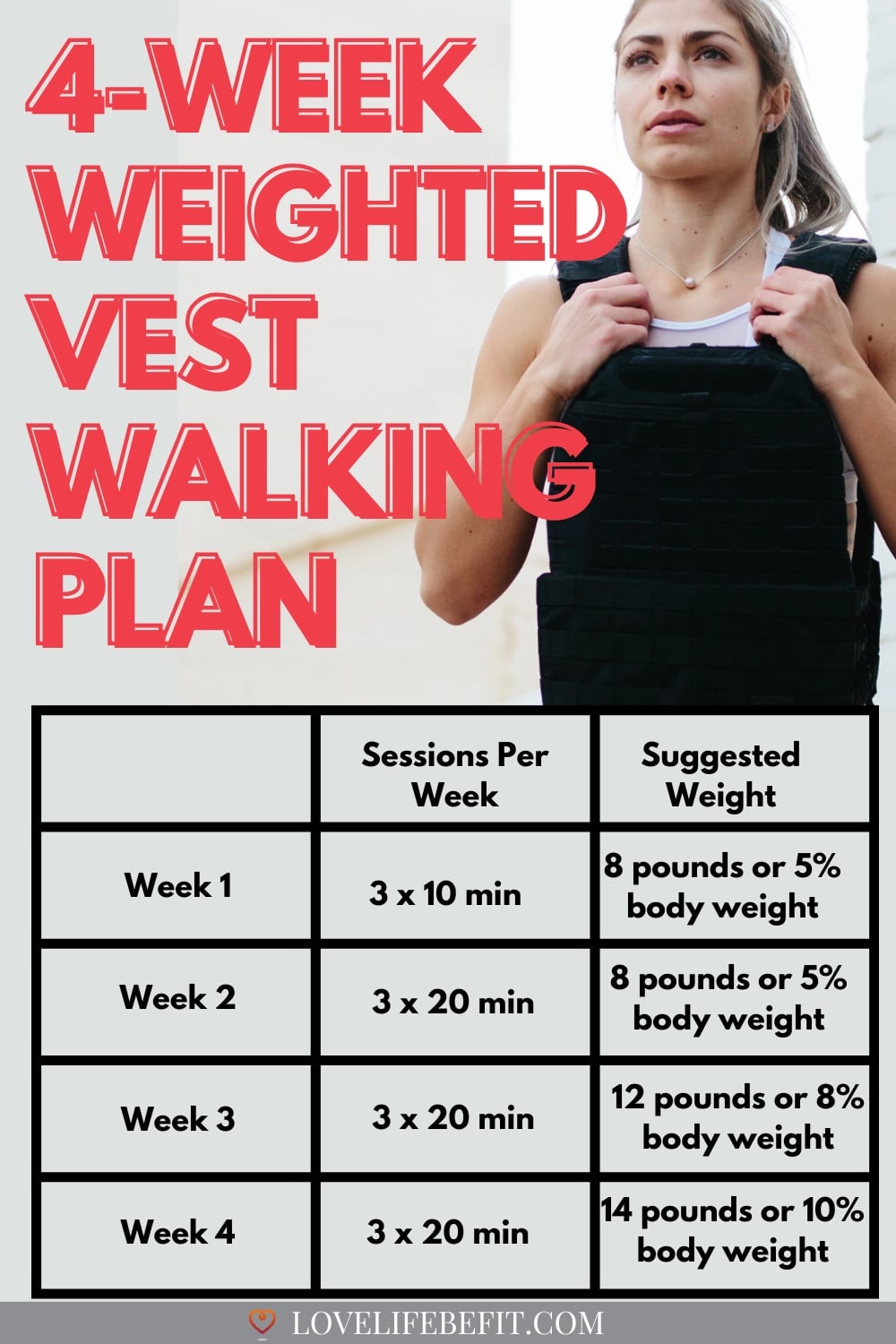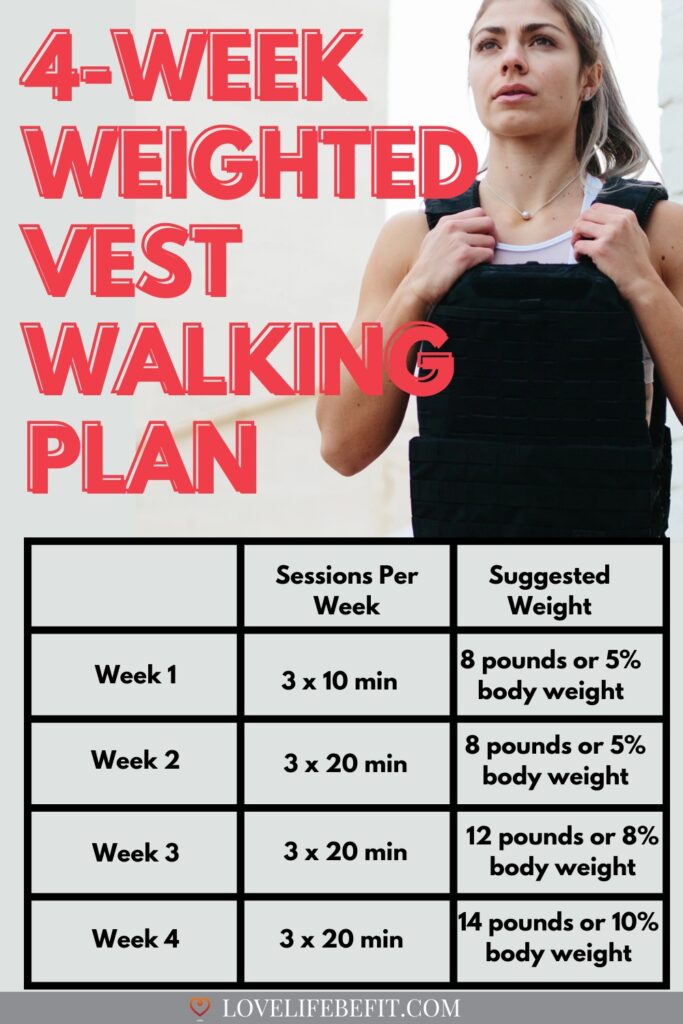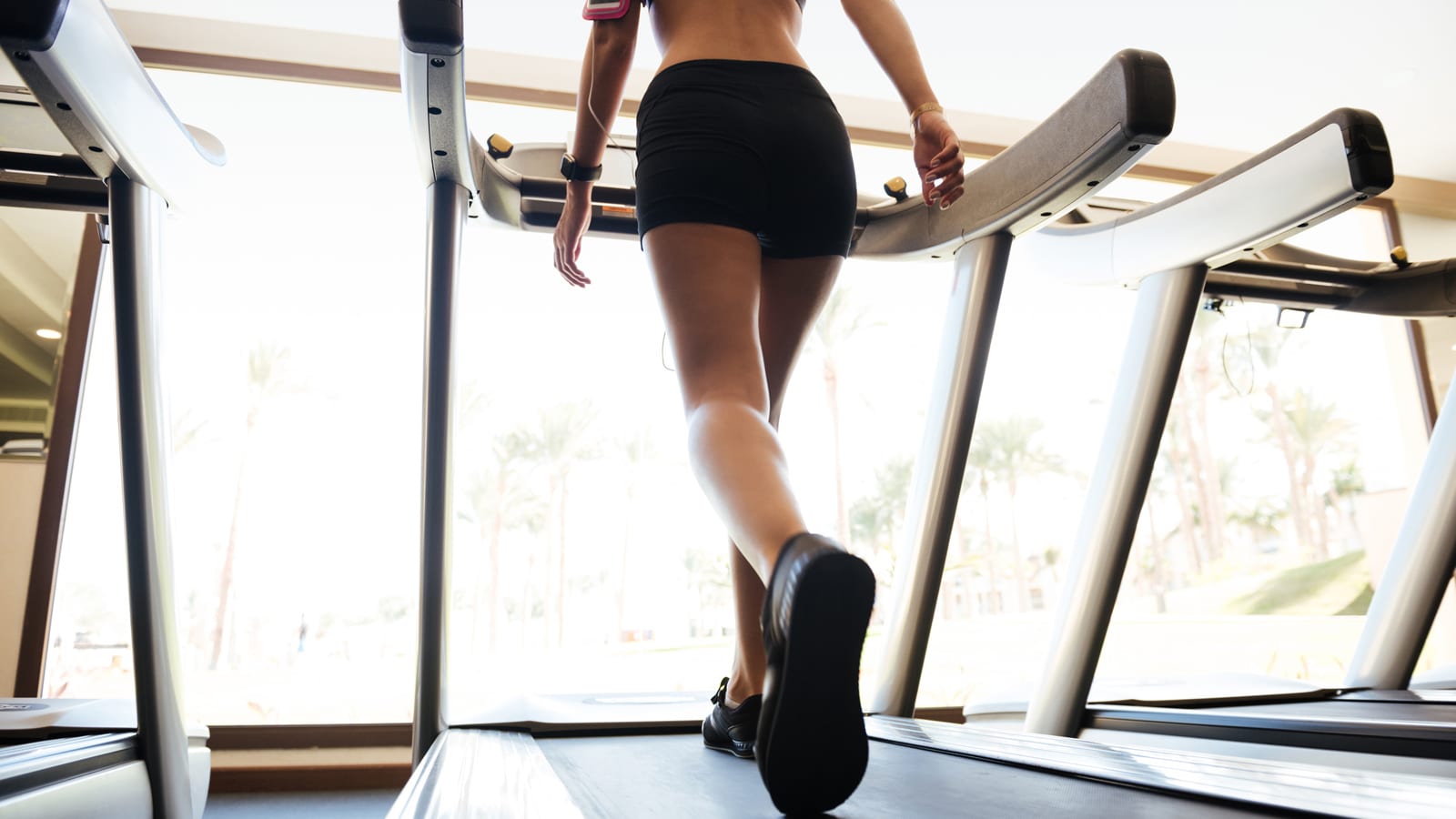Weighted Vest Walking Plan With Tips To Get Started
From helping to offset bone density loss as we age to improving cardio and building strength, wearing a weighted vest while walking can have a big impact on your health and fitness. These tips will help you choose the right weighted vest and maximize the benefits of your weighted vest walking session. Find out how to get results with this weighted vest walking workout.

This post contains affiliate links. This means I receive a commission if you make a purchase through my links, but this is at no additional cost to you. Please read my disclaimer for more information.
Benefits Of Wearing A Weighted Vest
Walking is hugely beneficial for your health and fitness, and fitting two or three walks into your weekly schedule can vastly improve your cardiovascular fitness. Yet walking on its own won’t completely cover all your fitness requirements. It’s important to strength train. You could hit the gym, but simply wearing a weight vest on your walks is enough to keep your muscles strong and improve your bone health. Here are some of the benefits of walking with a weighted vest:
- Improves Bone Density: It may not be fair, but women are far more prone to developing osteoporosis. Regular weight-bearing exercise will help to maintain your bone density and strength. Walking on its own does help, but walking with a weighted vest will have a higher impact.
- Builds Muscle Strength: Spend some time walking with a weighted vest, and you’ll soon notice the difference in your muscle strength – you’ll build strong legs, back, and core.
- Improves Balance: Stronger muscles will make you more stable and less prone to slips and falls. Stronger back and core muscles will help improve your posture.
- Makes You Work Harder: You’ll get more out of your walking workouts by working harder, increasing your calorie burn, and boosting your cardio.

Tips For Choosing A Weighted Vest
Getting the right weighted vest will make all the difference between enjoying your workouts and viewing them with dread. These tips will help you pick out the right vest for you:
- Comfort is King: The most important feature is comfort. If the vest doesn’t feel good when you first put it on, it certainly won’t after a few miles. Make sure it fits your torso properly, distributing weight across your body.
- Skin-Friendly Fabric: Look for soft, breathable fabrics that won’t rub your skin raw.
- Adjustable: The best vests have adjustable straps so you can get the vest to fit snugly. This will stop it from rubbing as you walk.
- Easy to Put On: If the weighted vest is a pain to put on, that’s going to be an excuse not to wear it.
- Easy to Move: You don’t want a vest that restricts your movement. You should be able to swing your arms just as easily as you can without a vest.
- Weight Adjustable: It’s easier to get used to using a weighted vest if you can adjust the weight you carry. Typically, you want the weighted vest to weigh between 5 to 10% of your body weight. For example, if you weigh 140 pounds, the vest should weigh between 7 and 14 pounds. If you can adjust the weight, you could start by carrying 7-8 pounds and, over a few weeks, gradually increase the weight to 14 pounds.
- Pouch to Carry Keys and Phone: It’s so handy if the vest comes with a pouch for stashing everything you need on your walk, such as house keys and your phone.
This is the best adjustable vest I’ve found. Alternatively, if you want a front-opening, compact vest, these vests are affordable and can be purchased in different weights, such as 8 pounds and 12 pounds.
Weighted Vest Walking Plan
This 4-week walking plan will help you incorporate a weighted vest into your exercise plan. There are suggestions for gradually increasing the weight you carry, or if you’re using a fixed weight vest, adjusting the distance or intensity of your exercise.
It’s a beginner plan for someone who’s used to walking but wants to start walking with weights.
Before you get started, check in with your doctor. If you haven’t exercised for a while, you’re carrying a lot of excess weight, or you have any pre-existing medical issues, it’s always best to check with your doctor before starting an exercise program.
The 4-week plan starts with short walking sessions three days a week and builds up to harder sessions with extra weight and/or longer distances.
Week 1
This weighted vest walking exercise plan gets off to a gentle start with just 10-minute walks—5 minutes out and 5 minutes back, or you can even use a treadmill. It’s best to start with a weight of 5% of your body weight, typically 8 pounds for a woman. Aim for at least three walks a week with a weighted vest.
Week 2
This time, we’re increasing the walks to 20 minutes, but keeping the weight the same. Again, aim for three walks a week. If you’re struggling to adjust to carrying a weighted vest, consider repeating the 10-minute walks or increasing them to 15 minutes instead of 20 minutes. Many people find carrying weight takes a lot of getting used to. You’ll get there; it’s just going to take longer to build up your back and core strength.
Week 3
If you have the option to adjust the weight of your vest, add an extra 2 pounds to 4 pounds. That’s 10 to 12 pounds if you started with 8 pounds. Again, aim for three 20-minute walks a week. If you’re unable to increase the weight, try walking a little faster or increasing the duration of your walks to 25 or 30 minutes.
Week 4
Ready to push? If the walking plan has been doable so far and you’re coping with carrying the extra weight, increase to 10% of your body weight, for example, 14 pounds if you weigh 140 pounds. Three 20-minute walks with the new weight. Alternatively, if you’re unable to increase the weight, find a gentle hill to walk up or set your treadmill on an incline of 3 to 5%. It won’t feel so gentle with a weighted vest!
Walking Pace
Throughout the plan, make sure you’re listening to your body and adjusting the distance, weight carried, and walking pace so that you’re pushing yourself but not overdoing it. You’re aiming for a brisk pace where you’re walking with purpose. You’re making an effort, but you can still hold a conversation.
Alternative To A Weighted Vest
Walking with a weighted backpack, often called rucking, is an alternative to using a weight vest. There’s less weight distribution around your body with the weight on your back and shoulders. You’ll use your core more to stabilise the load. Both methods are good ways to build strength, fitness, and protect against osteoporosis.






